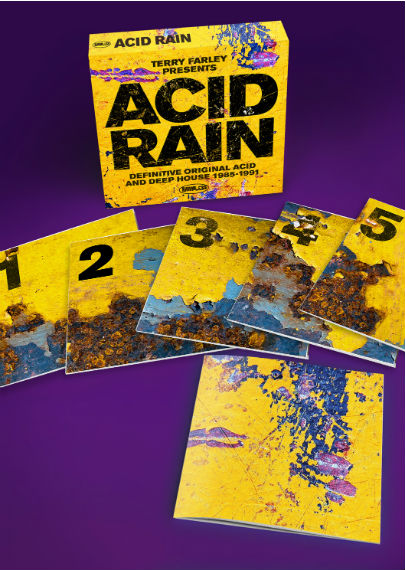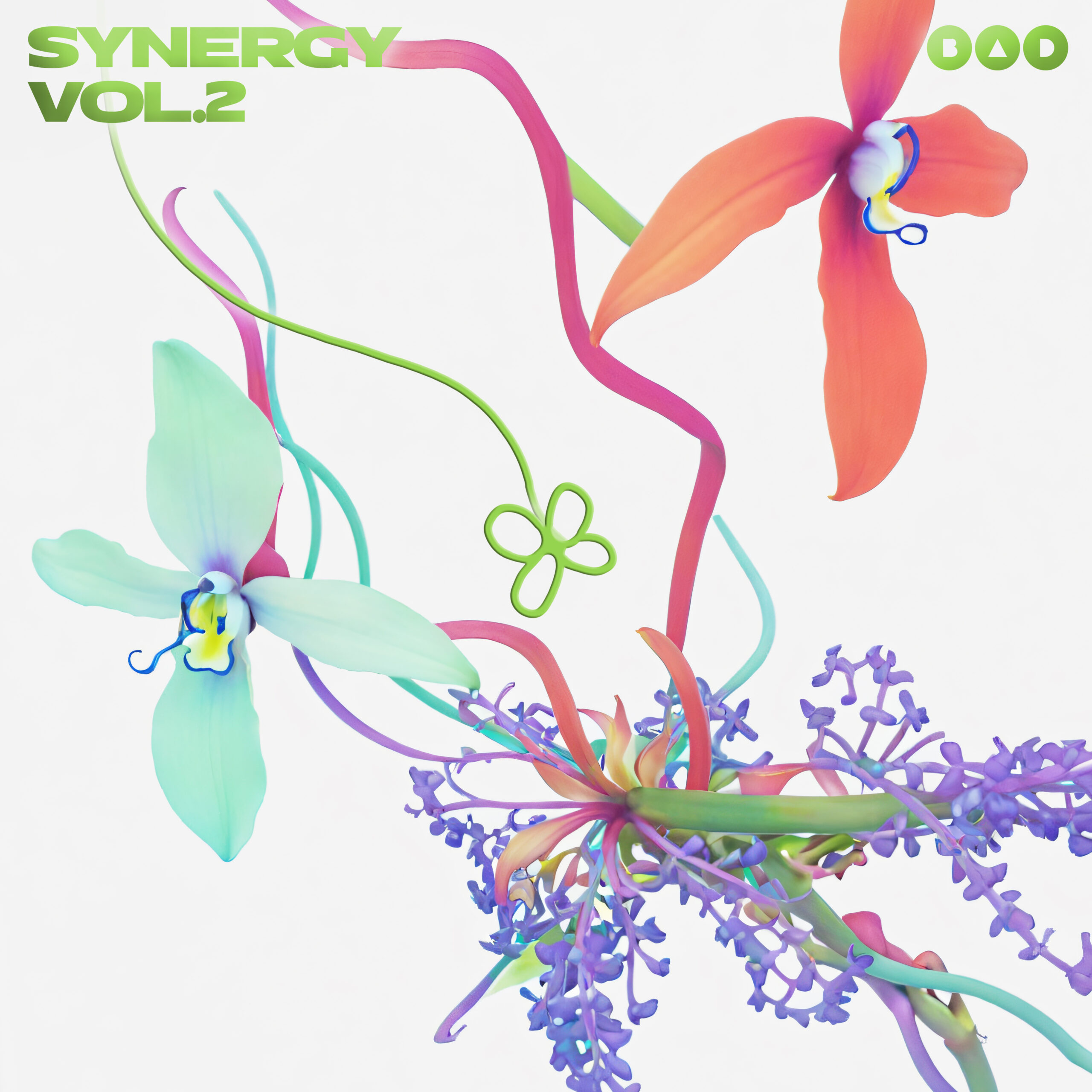acid rain sleevenotes part 1

IN THE BEGINNING
In the beginning there was Jack. And Jack had a groove. But that groove was not house; it was disco from Italy, punk funk from New York, new wave synth pop from Britain, edits of disco standards from Philadelphia, and more, much more. Mixed together then brought to the boil by fertile imaginations on the dancefloors that formed the melting pot that was the club scene of Chicago in the early 1980s, from which house music was born.
But, the seeds of what to become a global music phenomenon were sown during the dying days of disco, in the club that gave house music its name The Warehouse.
Robert Williams was a New Yorker and club goer, frequenting the popular discos in the Big Apple, including the likes of Nicky Sianos The Sanctuary, Tee Scotts Better Days and David Mancusos Loft parties. On these dancefloors he would have crossed paths with two young friends and dancers, Frankie Knuckles and Larry Levan, who were spending more time in nightclubs than they were at school. Williams was unaware of the two young tearaways, but that changed when he first became their juvenile officer, (after a late night donut-purloining incident had them in trouble with the police) and then, through their mutual love of New York nightlife, their friend.
Williams relocated to Chicago in the early 1970s and ran a series of after-hours clubs with a group of like-minded souls, the last incarnation of which was in an industrial space that quickly became known amongst its clientele as The Warehouse. Williams continued alone after the group split, setting up his own party in a new space and taking The Warehouse name with him.
Richard Long and Associates, the company responsible for the legendary sound system at Paradise Garage in New York, installed a custom-built sound system; so with near perfect sound, a juice bar and none of the opening hour restrictions associated with an alcohol license, the foundations were laid for what should have been a great party venue. But, having lost the previous incumbent in the split with his former partners, Williams was missing one element, a DJ, or more to the point, a special DJ that would pull a crowd to his nascent party venture. To fill that void he looked east; to his hometown of New York and to his two young friends from his days clubbing in the city.
By this time, Larry Levan was the more established DJ, having held down successful residencies at the Continental Baths and Reade Street, before being offered the slot at the new super disco, the Paradise Garage. Williams approached him first but Levan, happy with his lot in Manhattan, was unwilling to come Chicago.
Williams then turned to Frankie Knuckles, who having been given his break by Tee Scott at Better Days, had filled the vacancy left by Larry at the Continental Baths before the venue had gone bankrupt that summer. Therefore, Knuckles was more amenable to the idea and travelled to Chicago for The Warehouses opening party in March 1977, before agreeing to take up the residency. After an initially lukewarm reception and poor attendance, Knuckles slowly started to establish a reputation for himself in the Chicago disco scene; the dancers began to come and the parties at The Warehouse really took off.
However, something happened to Knuckles during his time at The Warehouse. As he became integrated into the Chicago scene, his slick New York musical style began to meld with the more electronic , synth pop and post-punk new wave styles championed by the likes of Herb Kent. These styles could be heard on Kents Punk Out radio show, and by the Hot Mix 5, (a team of five technically gifted DJs: Kenny Jammin Jason, Farley Keith Williams, Mickey Mixin Oliver, Ralphie Rosario, and Steve Silk Hurley), on their hugely influential WBMX show.
This style of music was also favoured by many of the younger, often straight, kids that were beginning to attend The Warehouse parties, as well as their own regular haunts like The Playground. At this venue, a young DJ by the name of Jesse Saunders played alongside Hot Mix 5 DJ, Farley Keith Williams, or Farley Jackmaster Funk, as he was later to become better known. One of the young DJ duos favourite tricks was to use a drum machine to add an electronic four to the floor beat over other records a sound that would become the hallmark of house music.
Frankie Knuckles may not have been using a drum machine in his live sets, but increasingly he was mixing more modern music by the likes of Skatt Brothers, B-52s, Yello, and Gino Soccio, with another of his trademarks – re-edits which had been made solely for his use at the Warehouse. Knuckles had been schooled in the discos of New York, where pioneering DJs like Walter Gibbons had started using two copies of the same record to extend rhythmic break sections to work their dancefloors into a frenzy. This in turn saw the development of remixes by the like of Gibbons, Frankies friend Larry Levan, and his mentor, Tee Scott, that took short album tracks and transformed them into longer, percussion driven tracks designed for the dance-floor.
Edits were essentially a lower cost, more rudimentary, extension of this idea; a halfway house between live mixes and remixes, using spliced sections of tape to extend drum breaks and loop particular lyrical refrains. With the help of his friend and sound engineering student, Erasmo Rivera, Knuckles rebuilt popular records, stretching out the percussive elements, making them more in keeping with the modern electronic music, which he now played alongside. This allowed him to tease his dancers with looped snippets of tracks the dancers felt they knew, building the anticipation and tension, before satisfying their need by hitting them with the song they knew and wanted.
Some would argue that these re-edits were actually the first house records, and soon the original versions of many of these tracks, along with the new electronic music Knuckles was playing, started to appear on the wall of his favoured record shop, Importes Etc, with the label As Heard At The Warehouse. Shop staff, like Brett Wilcotts and Chip E, began to shorten that description to Warehouse Music and then further still to House Music. Thus, the name was born not to describe a specific genre of music, but more a DJing style: Knuckles DJing style.
In 1983, Knuckles left The Warehouse to set up his own club, The Powerplant. The hotchpotch of different records that sound-tracked those heady nights and hazy mornings at The Warehouse had already made their mark on many kids that had danced to them – kids who were just about to become the first wave of true house music producers and create the music to fit the name.
Next week…part 2.
Words by R$N home boy and all round good’un Monsieur Miles Simpson.
Acid Rain: Definitive Original Acid & Deep House 1985-1991 is out on Harmless on August 12th.


















Must Reads
David Holmes – Humanity As An Act Of Resistance in three chapters
As a nation, the Irish have always had a profound relationship with the people of Palestine
Rotterdam – A City which Bounces Back
The Dutch city is in a state of constant revival
Going Remote.
Home swapping as a lifestyle choice
Trending track
Vels d’Èter
Glass Isle
Shop NowDreaming
Timothy Clerkin
Shop Now